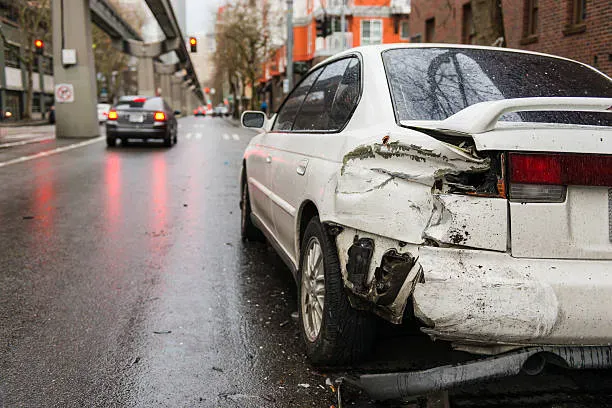Why 18 is the Magic Number for Adulthood?
Imagine stepping into a world where the line between being a teenager and an adult is as clear as a traffic light. In most places, that line is drawn at 18, marking the transition from adolescence to adulthood. But why 18? Why not 17 or 19? In this blog, we’ll explore why this age is seen as the start of adulthood and what it means for people going through this important stage of life.
advertisement
Introduction.
People keep growing and changing throughout their lives. A 45-year-old is likely to make better decisions and be quite different from their 25-year-old self, both physically and mentally. Despite this, in many places, the same rules apply to everyone once they reach a certain age, like 18 or 21.
So, why is there a specific age, like 18, when people are considered adults? This age affects things like driving, voting, drinking alcohol, and joining the military. But is this age the best measure of maturity? It's tough to pinpoint exactly when someone is truly ready for all these responsibilities.
Every society has rules to decide when a person is considered an adult and can make their own decisions. In India, the law, Section 3 of Indian Majority Act, 1875, says that a person is legally an adult at 18 years old. This applies to both men and women for most things.
Why 18? The Intersection of Maturity and Legality.
For instance, at just 16, Alexander the Great was already conquering lands and dealing with rebellions. Jeanne d'Arc, also 16, was making a name for herself by giving advice to military leaders. At 15, Charles Algernon Parsons was inventing early versions of cars. Julius Caesar was leading his family at 16 after his father died.
These examples show that throughout history, many people did significant adult tasks well before the age that most countries today consider someone mature enough to be an adult. In the past, families often decided when someone was ready to take on adult responsibilities.
Even though people mature at different ages and those close to someone might be better at judging their readiness for certain tasks, a standard age is usually set to create fair and consistent laws for everyone. This age is determined by lawmakers and can vary by country or even by state within a country. It helps to decide when a person is generally considered ready to handle adult responsibilities and be held accountable for their actions.
advertisement
Even though someone might reach physical maturity(Sexual) at a younger age, it doesn’t mean they’re mentally ready to take on adult responsibilities. Because of this, most cultures today set the legal age of adulthood higher to ensure people are better prepared for adult roles and decisions.
We now understand that the human brain isn’t fully developed until a person is in their mid-20s or even 30s. For example, the female brain usually finishes developing about two years earlier than the male brain. The frontal lobe, which is key for making decisions, understanding the future impact of our actions, and controlling impulses, is still maturing well past the age most cultures consider someone an adult.
Due to changes in the brain’s reward system, teenagers and young adults are much more influenced by peer pressure compared to when they were younger or will be as adults. For example, a 20-year-old is 50% more likely to take risks if two friends are watching compared to when they’re alone.
If we focused solely on brain development to decide adulthood, we might set the age at around 25-30 years. However, most people are mentally mature enough and have enough life experience to manage on their own before this age. This is probably why ages like 18 or 21 are commonly used. The exact age chosen often seems somewhat arbitrary and has been set based on historical and societal norms.
Current Legal Requirements: Marriage Age in India.

advertisement
The Indian government has proposed raising the legal marriage age for women from 18 to 21 years. Currently, women must be 18 to marry, while men must be 21. This proposal, introduced in the Lok Sabha on December 21, faced opposition and was sent to a parliamentary panel for review.
The proposed change would make the legal marriage age for women 21 across all religions, overriding previous laws. The last change in 1978 raised the marriage age for girls from 15 to 18 and for boys from 18 to 21.
Supporters of the new proposal argue that raising the age to 21 will allow girls to continue their education and reduce teenage pregnancies, which can lead to serious health risks and complications. They also believe that aligning the marriage age for women with that for men promotes gender equality.
Opponents, however, argue that child marriages are still common despite being illegal, and the focus should be on enforcing existing laws rather than changing the legal age. They also worry that girls from conservative families might face increased pressure and control if they have to wait longer to marry.
To address the issues related to early marriage, it might be more effective to improve education for girls, provide financial assistance, and raise awareness about the benefits of education and the risks of teenage pregnancy.
advertisement
In India, the legal marriage age is established by the Prohibition of Child Marriage Act, 2006, which updated earlier laws to increase the minimum age for marriage for both genders.
According to Section 2(a) of the Prohibition of Child Marriage Act, 2006, current Minimum Age:
- Female: 18 years.
- Male: 21 years.
Understanding the Variations in Legal Drinking Age Across States.
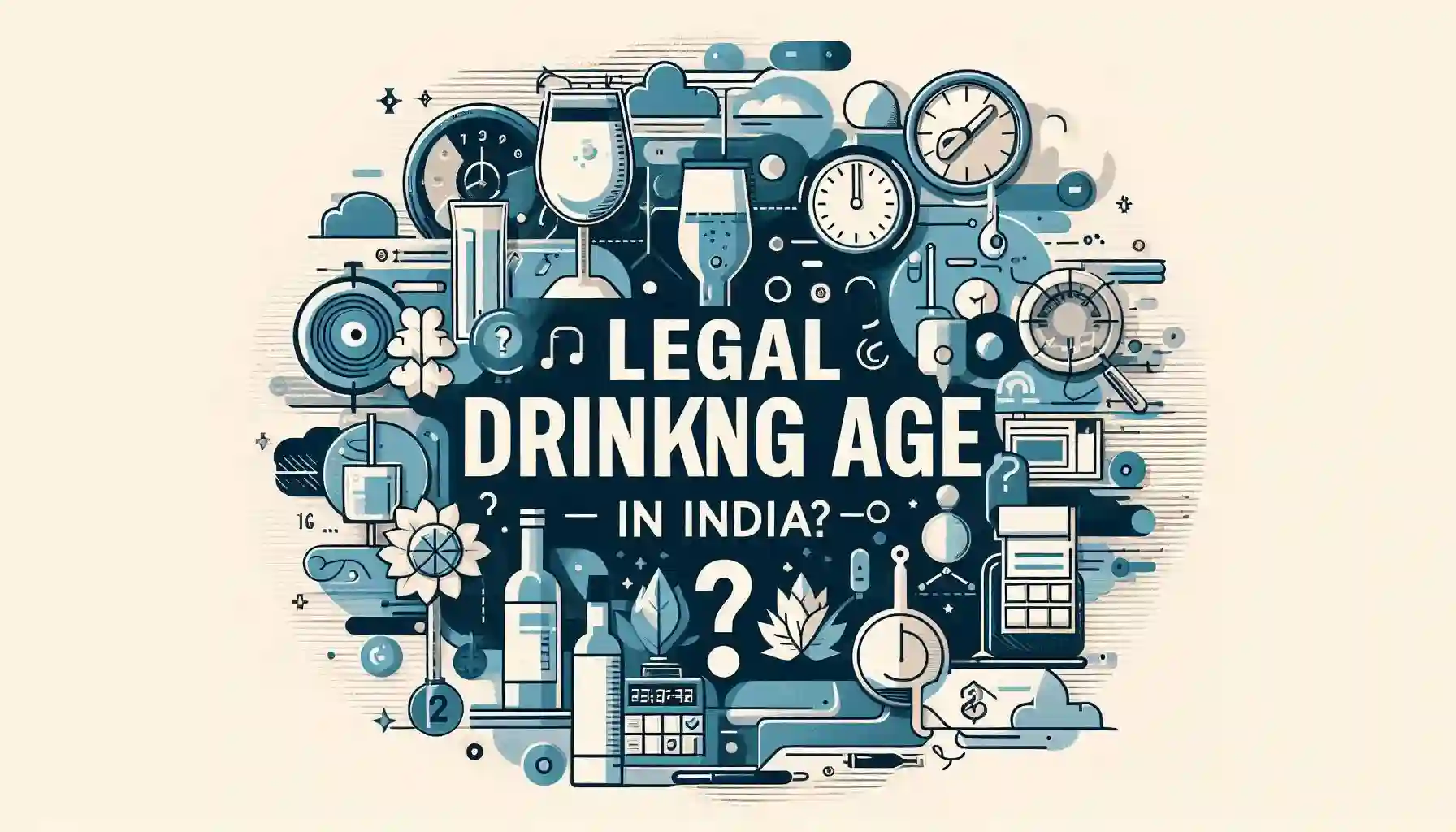
After public outrage over the tragic accident in Pune on May 19, where a Porsche driven by an alleged drunk minor killed two people, local authorities took swift action. They shut down the pub that served alcohol to minors and arrested the pub's staff.
The recent incident involving underage drinking and driving has sparked nationwide debate and criticism on social media, focusing on the reckless behavior of the teen’s father, who was driving at high speed. In India, you can get a driving license at 18, but the legal drinking age varies by state:
- Maharashtra: Mild beer can be consumed from 18 years old; hard liquor requires you to be 25.
- Goa, Rajasthan, Himachal Pradesh, Karnataka, Sikkim, and Puducherry: Legal drinking age for mild beer is 18.
- Uttar Pradesh, Andhra Pradesh, Arunachal Pradesh, Assam, Chhattisgarh, West Bengal, Tamil Nadu, Telangana, Jharkhand, and Madhya Pradesh: Hard liquor consumption is permitted only from 21 years old.
- Kerala: The legal drinking age is 23, up from 21 a few years ago.
- Maharashtra, Chandigarh, Meghalaya, and Punjab: The legal age for drinking is 25, although enforcement can vary by city.
- Gujarat and Bihar: Alcohol consumption is completely banned.
advertisement
Driving under the influence is banned across India under Section 185 of the Motor Vehicle Act, 1988 with a legal alcohol limit of 0.03% blood alcohol content. Commercial drivers face stricter limits. First-time offenders can be fined up to ₹10,000, face up to six months in prison, and risk having their driving license suspended. These penalties apply to all vehicle types, including two-wheelers, three-wheelers, and commercial vehicles.
Legal Framework: Minimum Age of Criminal Responsibility Under Indian Law.
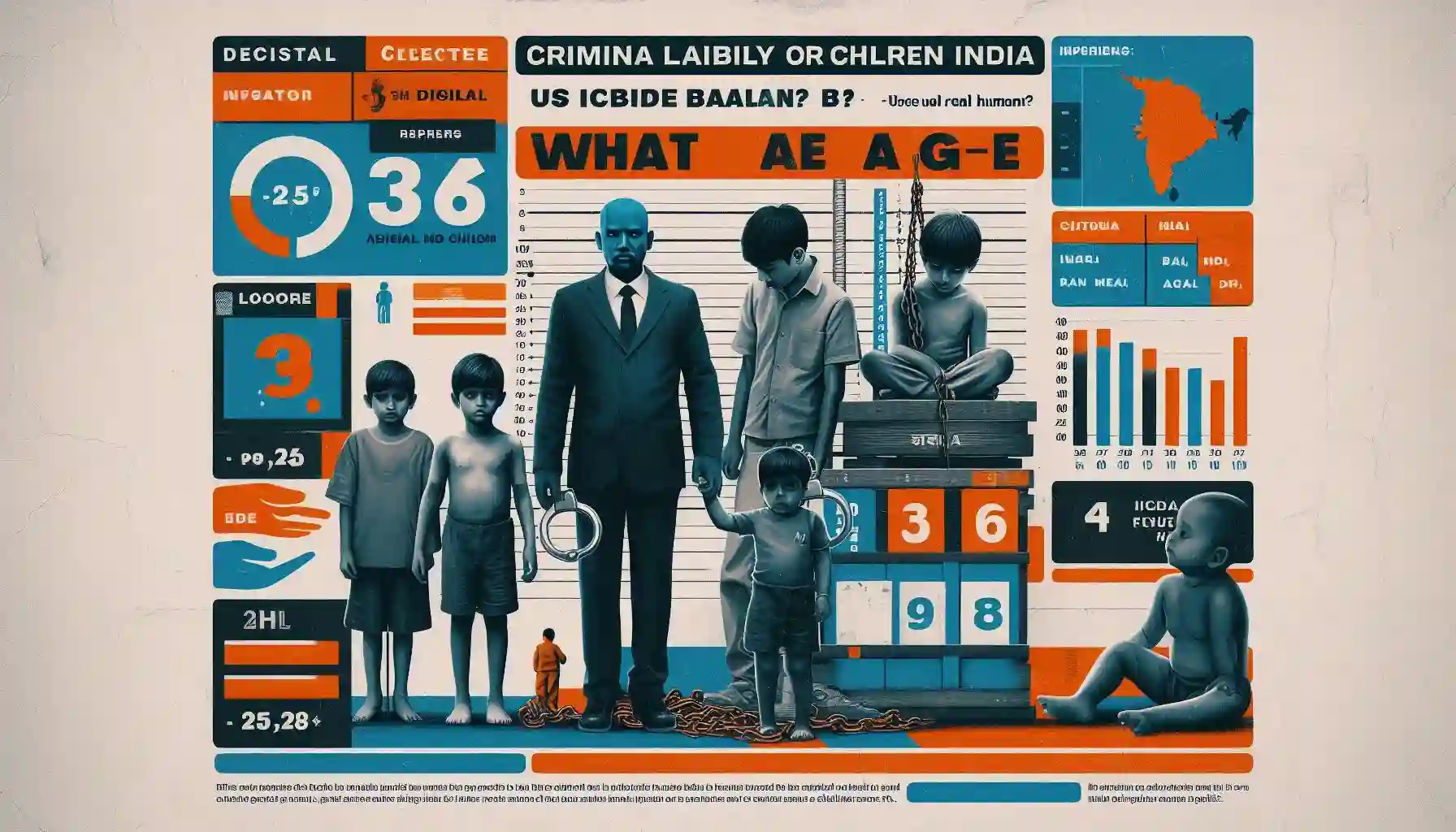
The Minimum Age of Criminal Responsibility is the age below which a person cannot be held legally responsible for committing a crime because they are not mature enough to understand the consequences of their actions. For younger people, particularly children and teenagers, crimes they commit are handled through special rules known as juvenile justice laws.
Today, more young people are getting involved in crime, which is a big problem around the world. In India, there are concerns about whether the current laws for young offenders are too lenient and need to be improved. The challenge is figuring out the right punishment for a child who commits a crime and finding a balance between preventing future crimes and helping the young person improve.
In India, the criminal justice system is guided by two main laws: the Bharatiya Nyaya Sanhita (BNS) from 2023 and the Bharatiya Nagarik Suraksha Sanhita (BNSS) from 2023. The BNS outlines the rights and responsibilities related to crimes, while the BNSS describes how courts should handle criminal cases.
According to the Section 20 of the Bharatiya Nyaya Sanhita, 2023, a child under the age of 7 cannot be punished for a crime because they are considered too young to understand their actions. For children between 7 and 12 years old the section 21 of the Bharatiya Nyaya Sanhita, 2023, they can only be punished if it's clear that they understood the consequences of their actions.
In India, the Juvenile Justice (Care and Protection of Children) Act, 2000 (JJ Act) addresses how to handle young people who break the law. According to this law under section 2(35), a juvenile is anyone under 18 years old. The JJ Act sets the age of criminal responsibility at 18, meaning it covers anyone who is under 18. This age is chosen to match the definition of a child under international rules, specifically the UN Convention on the Rights of the Child.
advertisement
The Age of Consent for Sexual Activity in India.
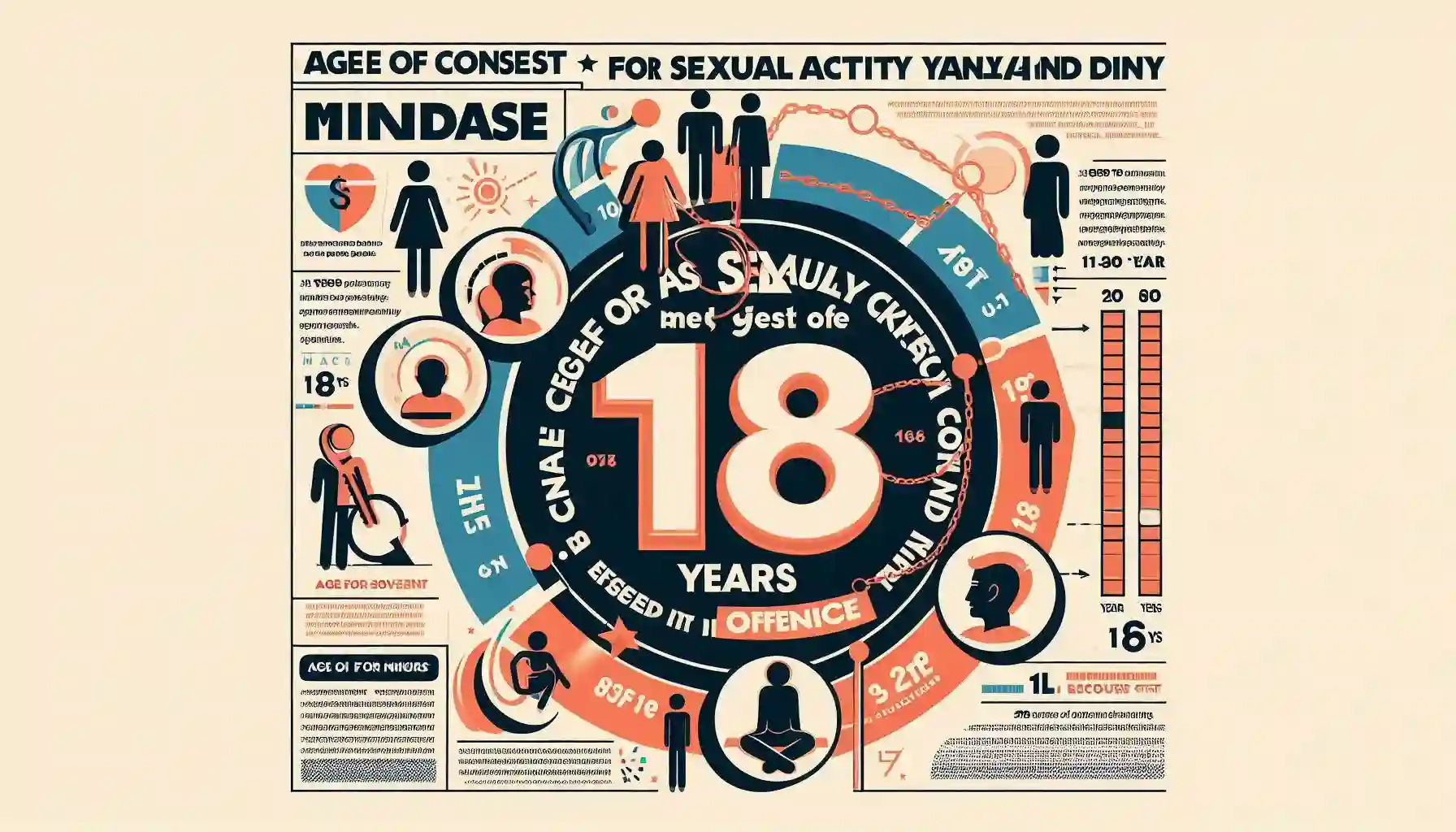
The age of consent is the legal age at which someone can agree to have sex. In India, this age is currently 18. Recently, the Law Commission of India decided not to recommend lowering this age to 16 under the Protection of Children from Sexual Offences (POCSO) Act, 2012.
Chief Justice Dr. D Y Chandrachud has urged lawmakers to consider the issues surrounding the criminalization of teenagers who engage in consensual sex under this Act. Many state high courts share this concern as well.
According to Section 2(d) of the Protection of Children from Sexual Offences (POCSO) Act, 2012, which defines a child as a person below the age of 18, and Act prohibiting any sexual activity with the child. So, in India, the legal age for sexual consent is 18 years old. This means that any sexual activity involving someone younger than 18 is considered illegal, even if both people agree to it. The main reason for this law is to protect young people from exploitation and abuse. However, this law has been criticized for not fully addressing the realities of teenage relationships and sexuality.
The Minimum Voting Age in India.
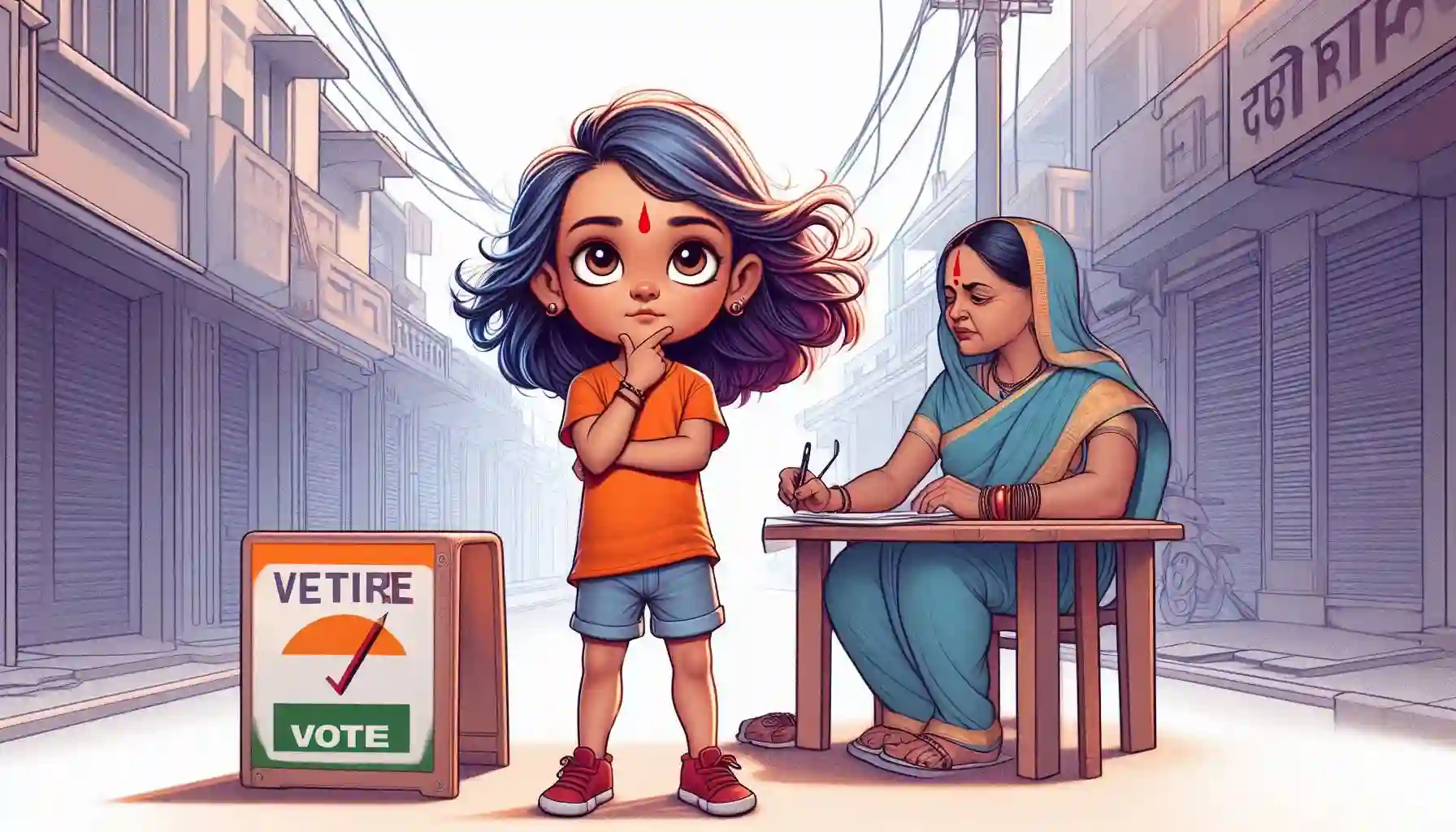
Picture this: You’re on the brink of adulthood, eager to shape the future and make your voice heard. But there's a rule that you must be 18 to cast your vote. Why is this specific age the magic number 18 for voting rights? Most countries today call themselves democracies. While the actual practice of democracy can vary, one key feature of democracy is elections. Voting is crucial in democracies because it allows citizens to choose their representatives.
A healthy democracy relies on free and fair elections where every adult citizen can vote. Through voting, people decide which political party will lead the government. This process makes sure that the government is accountable to the people and operates transparently.
advertisement
When every citizen's vote has the same weight, it promotes political equality. This means everyone has an equal say in decisions that affect their lives. High voter turnout helps ensure that the needs and interests of a wide range of people are considered and prevents small groups from having too much influence.
Voting also encourages people to be more involved in their country’s affairs. It gives them a say in important decisions about things like security, infrastructure, healthcare, and education, affecting their daily lives.
Previously, the minimum age for voter registration was 21 years. In 1988, a major change occurred with the 61st Constitution Amendment Act, which lowered the voting age from 21 to 18 years (Section 19 of The Representation of the People Act, 1950).
This allowed younger people to participate in elections and was considered a positive step because it better reflected the country's demographics and included more of the youth in the voting process.
- Article 326 of the Indian Constitution states that elections to the Lok Sabha (the lower house of Parliament) and state assemblies are based on “Adult suffrage.” This means that every Indian citizen who is 18 years old or older is eligible to vote in these elections.
advertisement
Conclusion.
Deciding what makes someone an adult and picking a specific age for this transition is really complex. People mature at different rates, and figuring out a single age that works for everyone is challenging. However, for practical reasons, governments need a specific age to set rules and laws, while also providing extra protections for younger individuals.
Most societies have settled on 18 as the legal age of adulthood because it's generally when people have enough maturity and basic knowledge to take responsibility for themselves. Even though people often become more mature and better at handling adult challenges as they get older, 18 is used as a baseline for legal purposes. This age is a compromise, and while it might not be perfect for everyone, it serves as a standard for setting laws and rules.
Frequently Asked Questions(FAQ’s).
1. According to the Indian Majority Act, who is a major?
In India, a person is legally considered an adult, or reaches the age of majority, when they turn 18 years old. Before this age, they are not considered fully responsible for legal matters.
2. What are the legal implications of consensual sexual activity between teenagers under the age of 18 in India?
Yes, under the Protection of Children from Sexual Offences (POCSO) Act of 2012, any sexual activity involving individuals under 18 is prohibited, even if it is consensual. The law aims to protect minors from sexual exploitation and abuse, but it has been criticized for not taking into account the complexities of teenage relationships.
3. Has the marriage age for females in India been changed to 21?
The proposed Bill to raise the legal marriage age for girls to 21 years has not been approved yet.
4. Has the voting age in India been 18 since the country's independence?
NO, previously, the minimum age for voter registration was 21 years. However, the 61st Amendment Act of 1988, along with Act 21 of 1989, lowered this age to 18 years. This change took effect on March 28, 1989.
advertisement
References
- Section 3 of Indian Majority Act, 1875
- Indian Majority Act: Defining Legal Parameters of Adulthood
- Why 18 is the legal age?
- Alexander the Great (356 - 323 BC)
- St. Joan of Arc
- Sir Charles Algernon Parsons
- Julius Caesar
- Proposal to Modify the Legal Age of Marriage in India
- Section 2(a) of the Prohibition of Child Marriage Act, 2006
- Why must Indians deal with multiple adulthoods?
- Section 185 of the Motor Vehicle Act, 1988
- Legal drinking age differs in most states: Did you know it's 18 years in Goa and 21-25 in Maharashtra?
- The Minimum Age of Criminal Responsibility in India: Is it to be blamed for the increasing youth crime?
- The Section 20 of the Bharatiya Nyaya Sanhita, 2023
- The Section 21 of the Bharatiya Nyaya Sanhita, 2023
advertisement
- Section 2(35) of the Juvenile Justice (Care and Protection of Children) Act, 2000
- Convention on the Rights of the Child
- Right to Vote: A Cornerstone of Democracy
- The Constitution (Sixty-first Amendment) Act, 1988
- Article 326 of the Indian Constitution
- The Representation of the People Act, 1950
- Law Commission rules out reducing age of consent, calls for greater judicial discretion in POCSO cases
- The Protection of Children from Sexual Offences (POCSO) Act, 2012
- Section 2(d) of the Protection of Children from Sexual Offences (POCSO) Act, 2012
- Leave Them Kids Alone

Written by Ruthvik Nayaka
Ruthvik Nayaka is a final year law student, his interests lie in areas including, but not limited to, Corporate Law and taxation law. He is also the EN-ROADS Climate Ambassador. He facilitates climate-workshops, climate action simulation games and group meetings.
advertisement
Further Reading
advertisement


